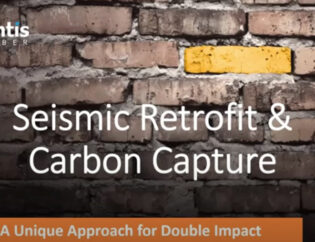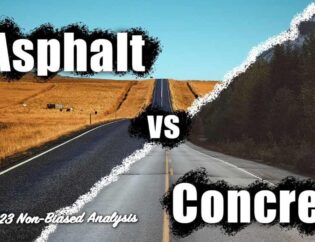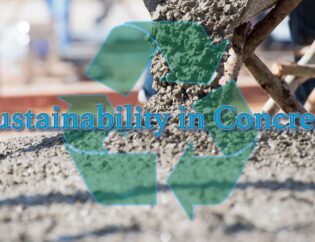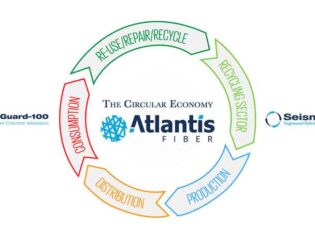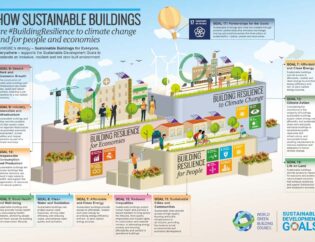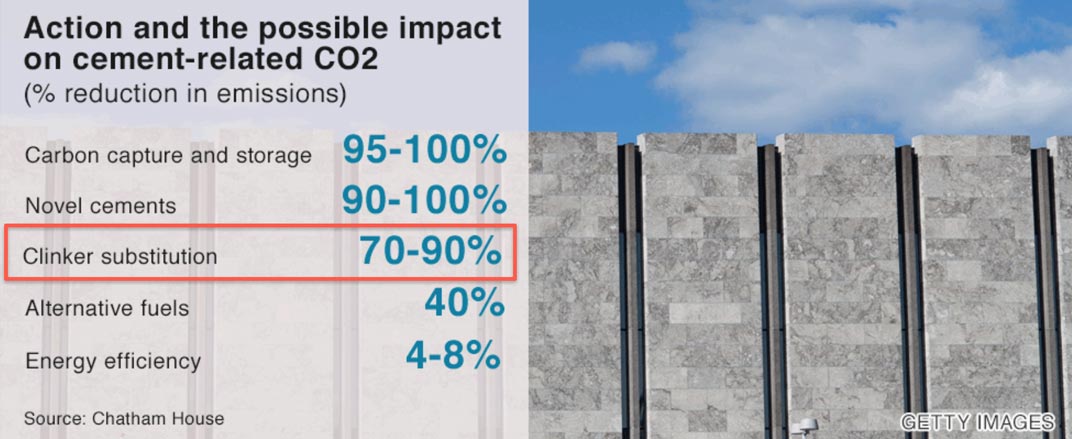
Who would have thought that sustainable and low-carbon concrete would be a thing — well, welcome to 2021!
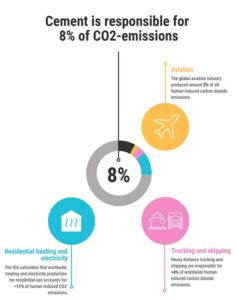
Concrete Is Traditionally A Dirty Industry
The cement industry is one of the main producers of carbon dioxide, a potent greenhouse gas. Concrete causes damage to the most fertile layer of the earth, the topsoil. Concrete is used to create hard surfaces which contribute to surface runoff that may cause soil erosion, water pollution and flooding.
But there is a solution; low-carbon concrete made with large-scale utilization of the STF in cement. This presents enormous environmental, economic and infrastructural sustainability benefits by removing tons of STF — basically tire waste—from our landfills and cement kilns as fuel. The realities are investors are increasingly applying non-financial factors — such as ESG (Environmental, Social, and Governance) — as part of their analysis process to identify material risks and growth opportunities.
The General Push To Go Green
Ten-Billion tons of concrete are made every year… let think about that for a second, that is around 286,000 full-size, fully-filled mixing trucks. That is a lot of concrete; in fact, according to Specify Concrete, “Concrete is the world’s most widely used material for construction – from bridges to large buildings, concrete forms the very foundation of our infrastructure. Over 70% of the world’s population lives in a concrete structure.”
This is where Green Concrete can help meet the new government mandates. Green concrete is a form of eco-friendly concrete that is manufactured using waste or residual materials from different industries and requires less amount of energy for production. AtlantisFiber™ helps you specify Green Concrete into your building and planning stage.
AtlantisFiber™ has developed technology surrounding an extracted blend of cleaned and refined fibers sourced from repurposed tire fiber-strands. From these strands, we produce a Converted Polymer Fiber (CPF) blend that offers many benefits when used in new-build and repair scenarios.
Ultimately, our CPF improves the bond with the substrate, due to a reduction in the shrinkage cracking, providing overall integrity throughout the molecular bond. Some types of fibers are also known to reduce permeability to water both in the absence and presence of cracking. In the latter case, fibers as crack arresters and provide superior resistance to ingress of water and other deleterious species. Non-corrosive fibers are preferred for repair… and bonus, it is extremely enviro-friendly!

New Government Mandates
“The government is doing its part to find ways to build a more resilient future that will lead to a safer, cleaner world. Through the Greening Government Strategy, the government has targeted a 30% reduction in embodied carbon for structural materials in major construction projects. Green procurement for building materials like cement will help us lower emissions and meet our federal goal of net zero by 2050.” ~ The Honourable Jean-Yves Duclos, President of the Treasury Board
Innovation, Science and Economic Development Canada
May 31, 2021, 09:30 ET
SHAWINIGAN, QC, May 31, 2021 /CNW/ – Science, research, and innovation play a key role in Canada’s move toward a cleaner and stronger economy and our fight against climate change. Working with industry—including the cement and concrete sector—is critical to creating economic opportunities for Canadians, growing our leadership in clean technologies, and reducing greenhouse gas emissions.
Today, the Honourable François-Philippe Champagne, Minister of Innovation, Science and Industry; Marie Glenn, Chair of the Cement Association of Canada (CAC); and Michael McSweeney, President and CEO of the CAC, issued a joint statement by the Government of Canada and the Canadian cement sector to support a roadmap to net-zero carbon concrete. This partnership and the resulting roadmap will position Canada’s cement and concrete industry to become a global leader in low-carbon cement and concrete production and related clean technologies.

The roadmap will provide Canadian industry with guidance on technologies, tools and policies needed to reach net-zero carbon concrete by 2050, including on:
- supporting the development of a low-carbon emissions supply chain in Canada and beyond through a data strategy, industrial standards, procurement and promotion;
- coordinating across the sector and government on high-potential research and investments to develop new technologies, products and processes that reduce the amount of carbon released in the production of cement and concrete; and
- engaging with federal, provincial and territorial partners, manufacturers, providers of cleantech solutions, and other stakeholders to fulfil the vision of global leadership in low-carbon cement manufacturing toward the goal of net-zero carbon concrete. This will be supported by tools and policies, such as Canada’s strengthened climate plan, the Clean Technology Data Strategy and new measures proposed in Budget 2021.
The work of this partnership will align with, and inform, the objective of the Greening Government Strategy: having the Government of Canada transition to net-zero carbon and climate-resilient operations.
“Cement and concrete have stood the test of time, laying a literal foundation upon which our communities have grown and prospered. But now our industry must face society’s greatest challenge: climate change. With Canada forecasted to use at least 55 million tons of cement over the next five years, this collaboration with Minister Champagne and his team is a significant step forward, helping to position Canada as a global leader by supporting the technology, tools and policies needed to realize our ambition of net-zero concrete by 2050.” ~ Michael McSweeney, President and CEO, Cement Association of Canada
Are you interested in getting a quote for your project or job? Start here to see our blend and admixture options.



